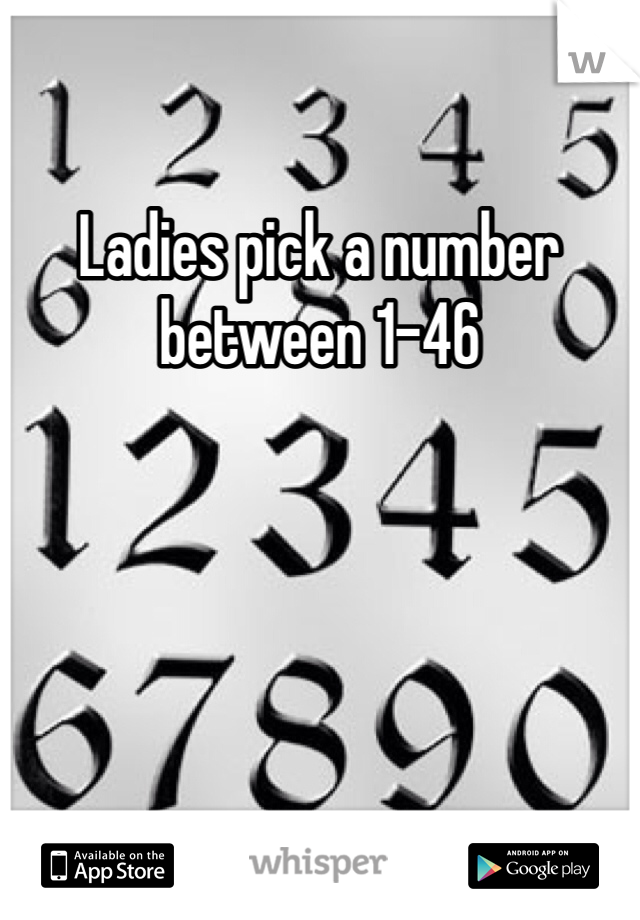
- #Pick a number between 1 and 3 google how to#
- #Pick a number between 1 and 3 google trial#
This should display a random decimal between 1 and 10 in the same cell. In this example we will generate five random numbers between 0 and 1: Let us take an example to see how it works. Using the RAND function to generate random numbers is easy too. #Pick a number between 1 and 3 google how to#
How to Use the RAND Function in Google Sheets The syntax for the RAND function is as follows: =RAND()Īs can be seen from the above syntax the RAND function takes no inputs or parameters. In other words, you can generate random numbers that are more than or equal to 0 and less than 1. The range includes the 0 and excludes the 1. The RAND function of Google Sheets lets you generate random decimal numbers between 0 and 1. Using the RAND Function to Generate Random Numbers in Google Sheets You can, however, use the RAND function instead of applications like these. So if you want random decimal values, the RANDBETWEEN function will not really serve many purposes.

Moreover, as mentioned before it only returns integers. RANDBETWEEN most probably will give you unique results if you have a really large range and need to generate a small number of random integers.įor example, if you want to generate 10 numbers between. However, it’s not the most reliable method if you’re looking to generate a set of uniqueintegers. The RANDBETWEEN function works great when all you need are a bunch of random integers. In case you don’t want these values to recalculate, you can convert these formula results into static values. This means that these would recalculate in case there are any changes in the worksheet.

Note that the RANDBETWEEN and the RAND function are volatile. If you want to use an integer value from a different cell in the function, you can enter a reference to that cell as follows: You can use this method to generate integers between any range of integer values.
You should now have a set of 5 randomly generated numbers between 1 and 10. Since we want to generate 5 random numbers like this, just drag down the fill handle (located at the lower right corner of the cell) till you reach the fifth cell. This should display any random integer between 1 and 10 in the same cell. Type in the function: =RANDBETWEEN(1, 10). Click on a cell in Google Sheets where you want to insert a random number. In this example we will generate five random numbers between 1 and 10: Using the RANDBETWEEN function to generate random numbers is really easy. How to Use the RANDBETWEEN Function in Google Sheets It goes without saying that the lower limit value should be less than the upper limit value. This could be a numeric integer value or reference to a cell containing an integer. Note that both upper_limit and lower_limit parameters must contain integer values. It specifies that the random number generated should be less than or equal to this parameter. upper_limit: This is an integer that demarcates the upper limit of the range. It specifies that the random number generated should be greater than or equal to this parameter. lower_limit: This is an integer that demarcates the lower limit of the range. The syntax for the RANDBETWEEN function is as follows: =RANDBETWEEN(,)Īs can be seen from the above syntax the RANDBETWEEN function takes two inputs: Therefore it lets you specify an upper and lower limit and then returns a random number between the two integers. The RANDBETWEEN function of Google sheets lets you generate random integers within a given range. Using the RANDBETWEEN Function to Generate Random Numbers in Google Sheets Altering the Refresh Rate of RAND and RANDBETWEEN. Using the RAND Function to Generate Random Numbers in Google Sheets. Using the RANDBETWEEN Function to Generate Random Numbers in Google Sheets. Our goal is to find one of the factors or (the other can be found by dividing from ). Let us assume that is a number to be factorized and. They discuss integer factorization and Pollard's rho algorithm. (1980), “An Improved Monte Carlo Factorization Algorithm”, BIT 20: 176–184, doi:10.1007/BF01933190Ī good reference to this algorithm is by Cormen, Leiserson and Rivest in their book. Improvements were suggested by Richard Brent in a follow up paper that appeared in 1980īrent, Richard P. (1975), “A Monte Carlo method for factorization”, BIT Numerical Mathematics 15 (3): 331–334 Pollard (who has many contributions to computational number theory). The original reference for this algorithm is a paper by John M. It is based on very simple ideas that can be used in other contexts as well. #Pick a number between 1 and 3 google trial#
It is not theįastest algorithm by far but in practice it outperforms trial division by many orders of magnitude. Pollard's Rho Algorithm is a very interesting and quite accessible algorithm for factoring numbers. A Quick Tutorial on Pollard's Rho Algorithm






 0 kommentar(er)
0 kommentar(er)
